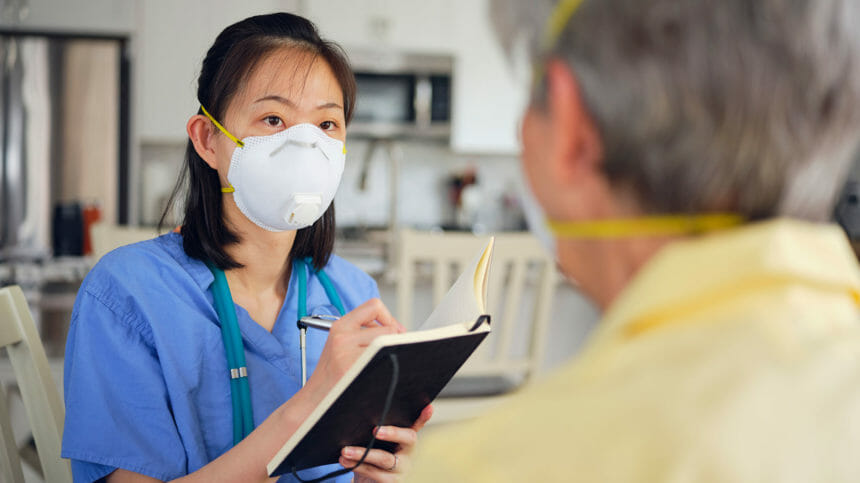
Close to 60% of nonprofit senior housing providers surveyed by LeadingAge reported confirmed COVID-19 cases in their communities, raising concerns about the more than 2.5 million low-income older adults living in affordable senior housing.
In an informal online poll from early October, a majority (69%) of the 278 senior housing providers who responded said they are “cost-burdened” or “severely cost-burdened” from having to pay for personal protective equipment, cleaning supplies, thermometers and other screening tools. And 84% of these providers see resident social isolation and access to services as the top challenges in the next three months.
“This is a wake-up call: COVID is not just a nursing home issue,” LeadingAge President and CEO Katie Smith Sloan said. “This data shows why Congress must act now to help millions of vulnerable older adults for whom COVID could be a death sentence. Funding and access to testing, personal protective equipment, and other resources are critical to prevent the spread of COVID-19 among residents and staff in their communities.”
Linda Couch, LeadingAge vice president of housing policy, said that affordable housing providers using multifamily programs operated through the Department of Housing and Urban Development, including Section 8 Project-Based Rental Assistance and Section 202 Housing for the Elderly programs, are just now receiving resources from the Coronavirus Aid, Relief, and Economic Security (CARES) Act legislation to cover COVID-related costs associated with infection control, PPE, staffing and operational adjustments.
“Affordable senior housing was a footnote in the CARES Act,” Couch said. “These communities are home to at-risk older adults, and so much more attention has to be paid to them.”
Amy Schectman, CEO of 2Life Communities, serving more than 1,600 older adults on five campuses in Massachusetts, said that once the pandemic hit, her company pivoted to provide meals, groceries, laundry service, mail delivery, trash removal and disinfecting services.
“Government should be our partner in this life-preserving effort, if for no other reason than it reduces hospital and healthcare costs by stopping the spread,” she said.
Older adults living in federally assisted senior housing communities are more likely to be non-white and have more chronic health conditions than their non-HUD-assisted peers, according to LeadingAge. Research shows that minorities, low-income seniors and those in congregate living settings have been disproportionately affected by the pandemic, the organization said.
Other findings of the survey show that many providers also are facing staffing challenges, maintenance backlogs and occupancy declines. As many communities implemented broad visitor restrictions during the pandemic, heightened reliance on internet service and devices has become critical in keeping older adults connected to family, friends and healthcare providers, LeadingAge said.
Roger Myers, president and CEO of Presbyterian Villages of Michigan, which operates 24 affordable housing communities serving 2,120 residents, said that HUD and Congress must treat WiFi in residential units the same as other basic utilities, calling it an “essential service.”
“The unintended physical, mental and social consequences from the lockdown are severe,” Myers said. “If a resident doesn’t have WiFi, she or he loses important emotional supports. Mental health impacts physical health; there’s the threat of a downward spiral.”
Mark Ricketts, president and CEO of Columbus, OH-based National Church Residences, which operates 310 affordable housing communities in 25 states and Puerto Rico, said that digital resources are out of reach for many of his low-income seniors.
“This comes at a time when healthcare providers are reporting a large increase in telehealth visits, but a majority of our residents, most of whom have chronic medical conditions, don’t have the resources to conduct these visits remotely,” he said. “This leaves them cut off from the care, services and support systems they need to remain healthy and socially connected during this challenging time.”




